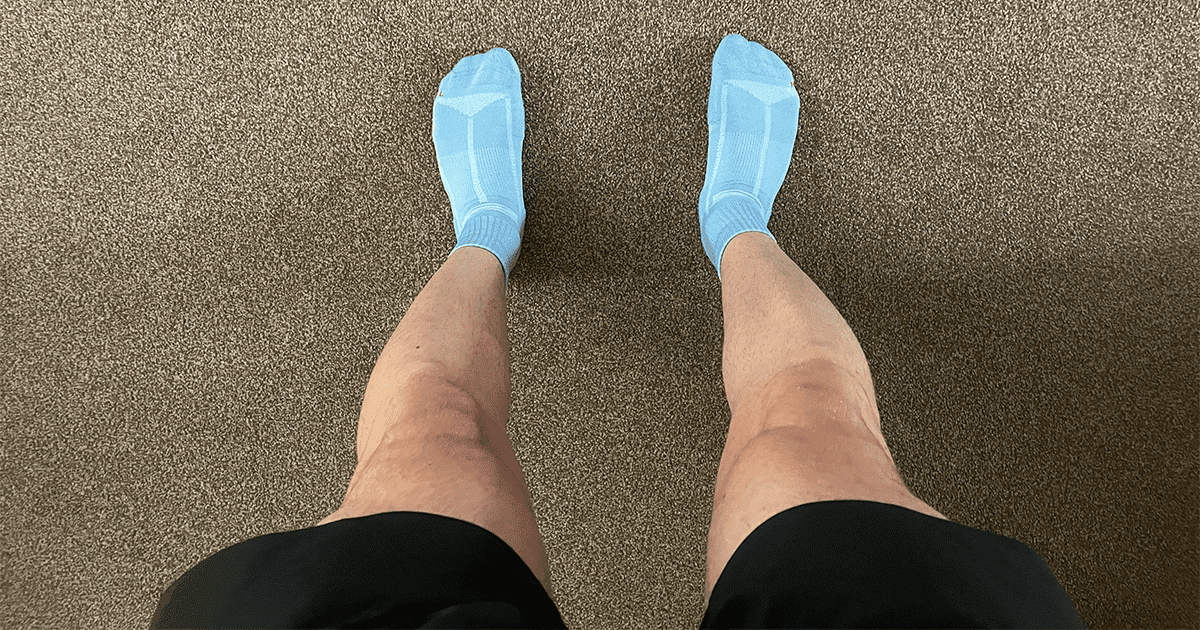Strength training for runners: the beginner’s guide
Strength training, for runners? Really? From the many benefits to the type of exercises, we dive into exactly what you need to know.

The gym can be an intimidating place, especially if it’s your first few times there. However, if you can get over the initial discomfort that is the gym environment chances are your running will benefit massively as a result of this. You see, the gym isn’t just for bodybuilders, the majority of sports now incorporate strength training into their weekly training sessions from frisbee fanatics to basketball players there is something to be gained for everyone.
However, before you get carried away and start hitting the gym several times a week, it’s important to remember that strength training should not replace your running, instead, it should complement it. Incorporating strength training alongside your regular training sessions such as your long run, tempo run, and interval training will ultimately result in faster more efficient running.
Essentially, it’s all about finding the right balance between strength training and your regular training. Training too hard in the gym may result in your regular running training to suffer. If you take anything away from this article let it be that strength training should complement your running, not replace it.
So, how often should I actually be strength training?
Good question. As strength is not our main discipline as runners, we want to be hitting the gym one to two times a week and definitely no more than three. Strength training too often or with little rest days in between will increase your risk of injury, quite obviously the opposite of what we’re trying to achieve.
Related: A 10-step approach to recovering from injury.
However, just like running strength training needs to be gradually incorporated into your training regime. When beginning, aim for a single gym/strength session per week whether this replaces an easier day of running or later in the evening having already run that morning. If running and strength training on the same day, it’s recommended to leave six to eight hours between sessions, especially if your run is on the more intense side.
Nevertheless, if possible we suggest avoiding this entirely and strength training on a separate day. This will reduce your risk of injury while hopefully increasing your motivation to actually get it done!
Once you’ve got a few weekly strength training sessions under your belt, you can slowly increase this to two or three. However, remember it’s important to take it slow and listen to your body – don’t go injuring yourself for the sake of lifting a weight a few pounds heavier.
Related: 8 Signs you may be overtraining as a runner.
What are the benefits of strength training for runners?
There are many benefits to including regular strength training into your training schedule, from improved running economy to reduced risk of injury there’s plenty to sink your teeth into.

1. Increased running economy
A study back in 1997 investigated the effects of a ten-week strength training programme on twelve female distance runners. Study participants were split up into two groups, one which undertook an additional three strength training sessions per week and another which only focused on endurance training (including running). Results revealed a significant improvement in running economy for the strength group with no significant changes for the endurance group.
However, the study also mentions that there were no differences in VO2 max measurements or body composition in either group. Nonetheless, a significant improvement in running economy from three strength training sessions over a ten-week period gives even more reason to get started today.
2. Increased time to exhaustion
Have you been chasing a personal best and always wondered how to maintain the same pace for longer periods of time? If so, then strength training could be the call you’ve been waiting for.
A further study in 2008 looked at the effect of maximal strength training on seventeen well-trained male and female runners. Participants were also allocated to one of two groups, an intervention group which performed an intense strength training session three times a week for eight weeks and the control group that maintained their regular running and endurance training. Results showed significant improvements for the intervention group particularly in increased time to exhaustion when running at their maximal aerobic speed.
For runners, this means you’ll be able to hold faster paces for longer, fundamental for achieving those personal bests.
3. Reduced risk of injury
Strength training, especially that of the lower body paired with core exercises are essential when it comes to avoiding injury as a runner. The stronger these muscles the longer we can hold excellent running form, preventing greater impact on the joints while also reducing the risk of pain associated with poor running form. Alongside this, it also allows us to strengthen much smaller muscles and muscular imbalances within our body – a common cause of injury. As you can imagine, improving the overall strength of these muscles allows our body to work as an entire unit, reducing additional stress from being placed on one individual muscle.
4. Improved weight-loss
If you’re running to lose weight or wouldn’t mind shedding a few extra pounds strength training will do just that. Regular strength training will increase your metabolism. This means you’ll burn more calories during and after your workout while also packing on lean muscle.
Related: Is 30-minutes of running per day enough to help me lose weight?
However, it’s important to replace calories depleted during each session, especially if you’re not looking to lose weight. Replacing these calories will also provide you with more energy throughout the day while allowing you to enjoy the pleasure of overindulging once in a while.
What type of strength training should runners do?

There are many different forms of strength training, with so many different kinds out there it can often be challenging trying to work out what’s best for you. Generally, regular weight training will work well for many runners (this generally falls in the rep range of 8-12) with exercises such as squats, walking lunges, deadlifts, and calf raises. However, there are also different ways to train, these will be covered below.
1. Bodyweight training
Great for beginners, bodyweight training can not only be done in the comfort of your own home, but it’s also inexpensive and extremely effective. Great if you’re not quite ready to invest in a gym membership.
Examples of bodyweight exercises include:
- Walking lunges
- Push-ups
- Air squats
- Standing calf raises
- Banded walks (resistance band)
- Planks
For each of these exercises, apart from the plank, you should look to complete a minimum of ten reps and three sets. Alternatively, if you’re a beginner and can’t quite reach ten just yet that’s absolutely fine – slowly work up to this number by performing as many as you can each set. The plank should also be done for anywhere between thirty and 60-seconds. Once you’re able to hold this you can start to include plank variations to make it that little bit more challenging.
2. Plyometric training
Plyometric training is a hot topic in the fitness industry. This type of training involves lots of fast and explosive movements which train the muscles to produce short bursts of power. Plyometric training is great for recruiting the muscles used during running while also improving balance, power and strength – great for tackling those hills!

A study published back in 2010 involving thirty-five distance runners concluded plyometric training to be an effective form of resistance training to mainly improve running economy. The results also showed this form of training to be more effective than regular strength/weight training on running economy.
Examples of plyometric training include:
- Box jumps
- Jump squats
- Step-up knee drive jump
- Jump lunges
- Clap push-ups
- Skipping
Similar to the bodyweight exercises, these plyometric specific exercises should ideally be performed for ten to twelve reps and for a total of three sets, apart from the skipping. Instead, the skipping can make for a great warmup or active rest between other exercises.
3. Weighted strength training
As previously mentioned, weighted training is also available and the most popular option for many runners. This method of resistance training follows a more stereotypical gym routine and involves weights – a great advancement from bodyweight training.
Examples of weighted strength training include:
- Weighted walking lunges (can use either two dumbbells or a barbell)
- Deadlifts
- Weighted squats
- Calf raises (these can be done with weights, on a machine, or on a step)
- Alternating rows
As well as the exercises listed above, you can also perform more traditional weight training exercises such as barbell and or dumbbell bench press, shoulder press, overhead press, and lateral raises. All of these exercises target less important muscles for running, however, will still make a solid contribution.
Therefore, we recommend prioritising those in the list above first, with any others seen as extras. Once again, perform these exercises for ten to twelve reps and for a total of three sets.
4. An endurance approach to strength training
For all of the above strength training exercises and routines, you can also take an endurance approach to this. Endurance strength training consists of performing more reps at a lower weight to improve muscular endurance – directly applicable to running. With this type of training, you want to aim anywhere between twelve and twenty reps per exercise for a total of three sets.
5. Core training

Finally, although not specifically strength training you should also look to incorporate core training into your sessions, ideally once or twice a week. Training your core will improve your overall running form, especially once you begin to get tired and your form starts to slip.
Examples of core exercises include:
- Planks
- Sit-ups
- Leg raises
- Russian twists
- Reverse crunches
- Ab wheel roll-outs
Related: 6 Core exercises for stronger, injury-free running.
The bottom line
Strength training for runners is a great way to improve your running economy, reduce your risk of injury, and to improve your time until exhaustion – helping you chase those personal bests. With such a variety of strength training options to try there really is something to suit everyone. However, if you’re a beginner do remember to ease into your training gradually while also remembering to compliment your running not to replace it.

Matthew is a lifelong runner, chief tester of all products, the founder of Running101, and freelance content writer for active brands. When he’s not writing, he enjoys lifting weights, cycling in the Lake District, and watching fast cars drive in circles on a Sunday. He also has a BA in sport, exercise and physical activity from the University of Durham.




